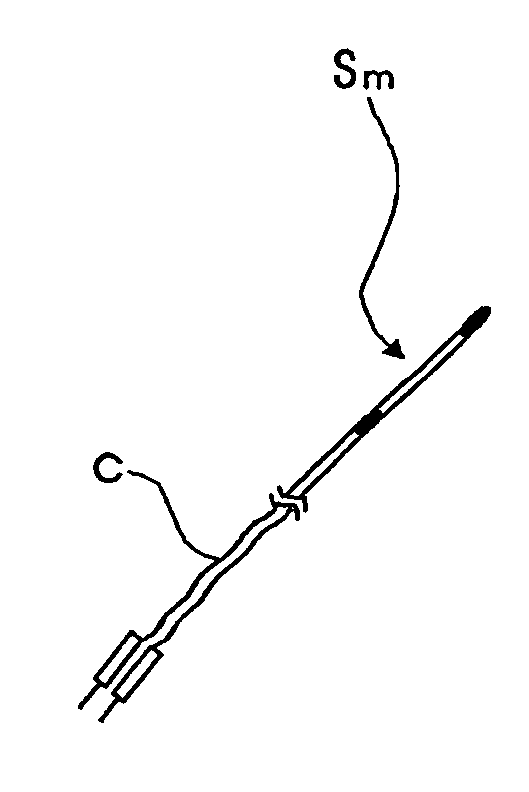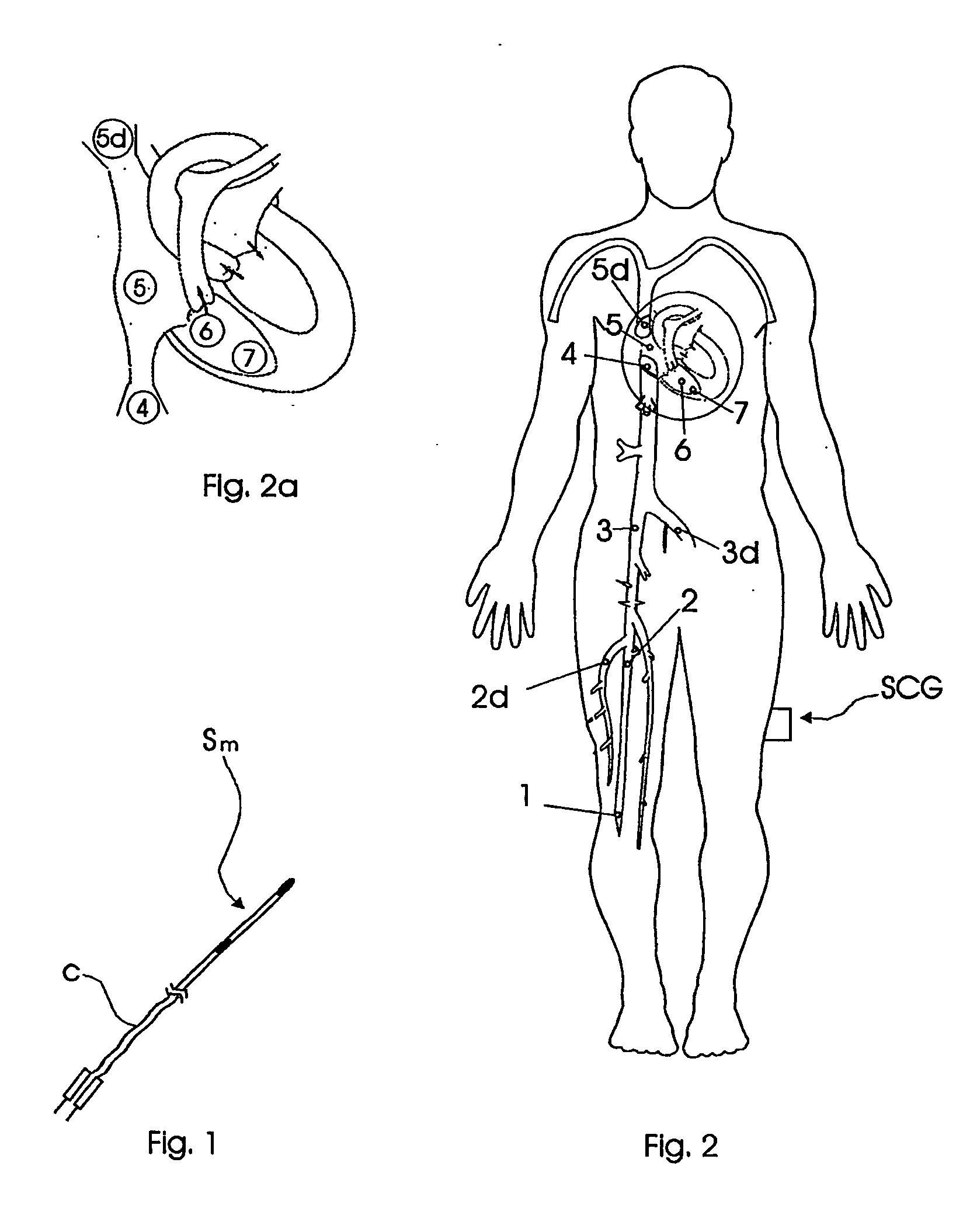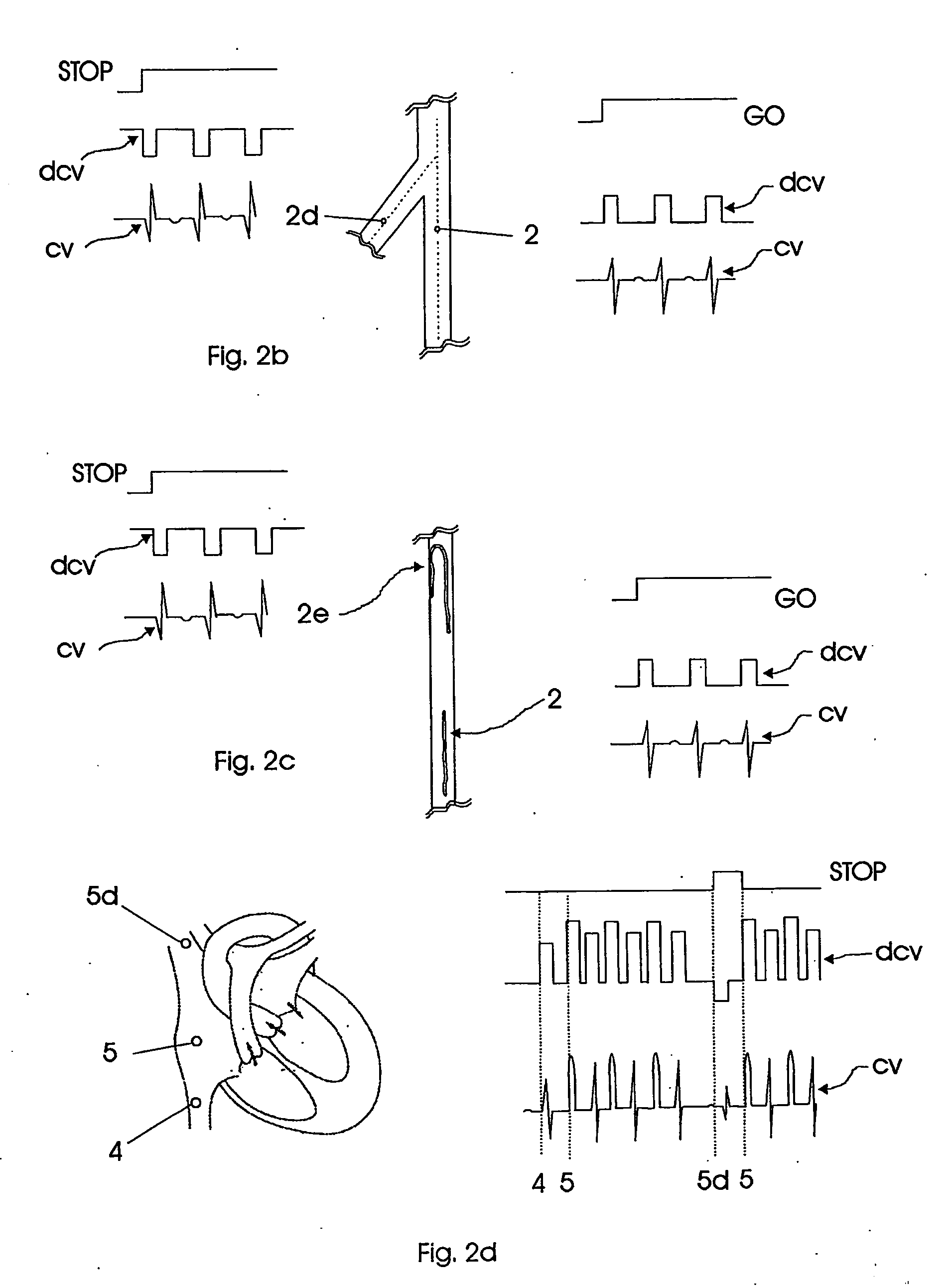Catheterization method and system
- Summary
- Abstract
- Description
- Claims
- Application Information
AI Technical Summary
Benefits of technology
Problems solved by technology
Method used
Image
Examples
Embodiment Construction
[0033] The tip of the catheter C shown in FIG. 1 is provided with a mobile sensor Sm in the form of a bipolar electrode serving to deliver cardiac signals cs representing electrical impulses associated with the cardiac activity and including a ventricular signal cv and an atrial signal ca corresponding respectively to the ventricular complex and to the atrial wave of an internal cardiogram of a patient undergoing catheterization. The bipolar electrode Sm also enables the emission of electrical impulses in the heart of the patient.
[0034]FIG. 2 represents points 1 to 4 indicating various positions of the bipolar electrode Sm on the path of the catheter C extending from the femoral vein to the vena cava inferior of a patient and points 5 and 6, 7 respectively indicating positions of the catheter tip in the right atrium and in the right ventricle of the patient's heart. FIGS. 2 and 2a further represent the points 2d, 3d and 5d indicating possible deviations of the catheter tip from the...
PUM
 Login to View More
Login to View More Abstract
Description
Claims
Application Information
 Login to View More
Login to View More - R&D
- Intellectual Property
- Life Sciences
- Materials
- Tech Scout
- Unparalleled Data Quality
- Higher Quality Content
- 60% Fewer Hallucinations
Browse by: Latest US Patents, China's latest patents, Technical Efficacy Thesaurus, Application Domain, Technology Topic, Popular Technical Reports.
© 2025 PatSnap. All rights reserved.Legal|Privacy policy|Modern Slavery Act Transparency Statement|Sitemap|About US| Contact US: help@patsnap.com



